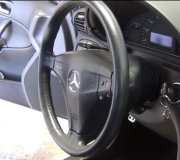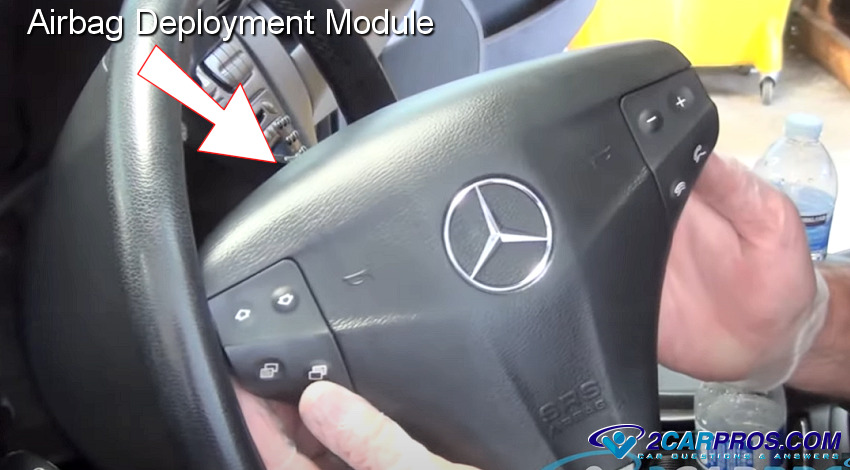Time to get a second opinion. Steering gear boxes are replaced when they bind intermittently or leak out the lower pitman shaft. Years ago it was a standard job to replace the pitman shaft seal, but today they make the gear boxes cheaper by using a bushing instead of a ball bearing to support that shaft. The leakage occurs now when that bushing becomes hammered out, and the shaft walks sideways, away from the seal. A new seal won't solve that, and the slop in that bushing results in excessive steering wander at higher speeds. The constant correcting makes for a very tiring vehicle to drive.
A steering gear box and a rack and pinion steering gear will never cause a wobble. Wobbles are always caused by something that is rotating, in this case, the wheels and tires. The point of confusion is when the pitman shaft's bushing is deformed and the shaft can move, but not far enough yet for leakage to occur, that slop can allow the wobble to occur more easily, but it never causes it.
For my next comment of great value, I have to state this carefully and with some extra detail. A steering gear box or rack and pinion assembly will not cause a pull when you let go of the steering wheel. That is caused by the alignment in most cases, and perhaps ten percent of the time by a tire pull. A tire pull does not necessarily mean the tire is bad, but it more likely is if that pull started after the tires have been on the vehicle for a while. All tires have a rolling resistance. That should be balanced on both sides by installing two new tires at the same time. I did have one tire in a set of four new ones in the '70s that pulled real hard to the right. Put it on the rear and never had another problem with those tires until they wore out at 40,000 miles. That one tire just had a different rolling resistance than the rest.
The most common cause of a wobble is a broken belt in a tire. The people at any tire and alignment shop can identify that. The easy ones are when there's a tumor, or raised hump in one part of the tread, or the tread squirms in an "S"-shape as you rotate it and watch it. A much more elusive broken belt can result in the tread looking perfectly smooth as you rotate the tire, but if you look closer at the grooves that channel the water out, you'll see a little area of the carcass rising and falling. While the tread looks okay when the vehicle is up on a hoist, when you set the weight down on it, that broken area will let the axle drop a fraction of an inch each time it comes around in contact with the road. Often you won't feel that at low speeds, and at higher speeds it feels like a tire that's out-of-balance, even after it has been balanced multiple times. This type of break occurs over a long enough time that the tumor wears down so the tread looks smooth.
A bent wheel can cause the wobble too, but some type of crash usually precedes this making it one of the first things looked at. Small bends are found with a dial indicator measuring around the edge where the weights go. As a general rule, anything over 0.045" of "lateral run out" is enough to feel at higher speeds.
Getting back to the gear box and the additional detail I promised, going back to the '60s, and on some models up to the '90s, the "spool valve" was adjustable. That is a lever-type valve that moves one way when you turn the steering wheel. It opens ports to let pressurized power steering fluid enter and push on the power piston. The piston moves the steering linkage, and it pulls the spool valve closed again to stop additional movement. If you want to turn sharper, you have to turn the steering wheel further. That opens the valve again and more movement occurs in the steering linkage. On those older models, that valve was housed in a cast piece where the hoses attached, and it had slotted holes for the two mounting bolts. O-rings sealed the fluid in when those bolts were loosened. The procedure for centering that valve involved raising the front tires off the ground, running the engine, then tapping that housing back and forth until the steering system did not move on its own, then you tighten the bolts. I learned this the hard way in school in the '70s. I rebuilt my gear box, which I found out later wasn't necessary, but no one explained the need to adjust that spool valve. I reached into the car, through the steering wheel, and started the engine. Of course the carburetor had already been on fast idle to add to the excitement. That power assist was so strong, the steering wheel forced my hand to the right, and the only thing that saved me from driving through the cement block wall was my fingertips hooked over the shift lever so it couldn't be pulled out of "park". I had to spin backward and reach my left hand over my right arm to get to the ignition switch. Later, after the crocodile tears were dried up, I learned that can be hard enough to break a wrist!
I had to share that only to explain that if anyone argues that a gear box can cause a pull, yes it can, but not all of a sudden on its own. That spool valve has to be out-of-adjustment, and that doesn't occur on its own. That adjustment is a one-time thing when the box is rebuilt. I did hear once about the lever for that valve cracking and bending, but that is too unusual and obscure to mention. On newer gear boxes, that spool valve is tucked inside and is not adjustable.
There's three main alignment angles we look at, and two of them cause pulling. The first one is "camber". That is the inward or outward tilt of the wheel as viewed from in front of the vehicle. A tire wants to roll in the direction it's leaning. If it leans too far, you'll have accelerated wear on the inside or the outside edge of that tire. Besides being in specs for best tire wear, it is important that both sides be the same. That way both tires pull equally as hard, but in opposite directions, and they balance each other out. Next, we want the left wheel to be tipped out just a little more than the right wheel. That is to put in a slight left-hand pull to offset "road crown". That is where roads slant to the right so water runs off. Road crown plus a slight camber pull to the left makes the vehicle go straight on most roads. This is the first thing we look at when you're complaining of a pull, (after checking the tires).
"Caster" is harder to explain, but essentially, look at the fork of a bicycle and how it angles rearward at the top. That is what makes it so we can ride no-handed. Weight makes the front wheel squirt out to the front, straight ahead. On cars, the way they've been set up since the '60s, that weight will make both front wheels turn toward the center of the car so hard, you won't be able to pull them back by hand. It's when we stick the steering linkage between them that they balance each other out. Caster has very little effect on tire wear, but there is an acceptable range it must be adjusted within. Too little caster results in steering wander, (although that is what made it possible to steer a heavy truck without power steering before the '60s. Today we use higher caster for better directional stability, but it makes the vehicles real hard to steer. (Try turning the steering wheel with the engine not running, and you'll see what the power steering system does for us). That's why we added power steering in the '60s. Caster is also what makes the steering wheel return to center after we go around a corner. The biggest concern again is caster must be equal on both sides. It makes the left wheel want to turn hard to the right and the right wheel wants to turn hard to the left. If caster is equal, the two wheels offset each other.
To avoid unnecessary customer complaints, I should mention that on most vehicles, caster and camber are adjusted together, meaning they're inter-related. It can be extremely difficult to get both sides perfect. Typically we set one wheel as precisely as we can get it, then we spend most of our time going back and forth on the other one trying to match it. That never comes out perfect, so for my first great and wondrous rule, a small camber pull one way can be offset by a caster pull the other way. As long as that isn't too great a difference, the car will go straight and handle well. If that difference is too much, a common symptom is when you fly over a railroad crossing, for example, and the car bounces up and down, it will continue to go straight, but the steering wheel will oscillate left and right, then come back to center. Observing that is one of our tricks in knowing something is wrong during a test-drive.
Rule number two is caster has absolutely no effect on pulling on front-wheel-drive vehicles. No instructor has ever been able to explain why, but almost all front-wheel-drive cars do not even provide a means of adjusting caster. Ford's engineers went even further and failed to provide camber adjustments on their cars since the '80s. You're simply stuck with the horrible tire wear and pulls, with no way to fix it.
As long as I'm at it, "toe" is the last adjustment. That is simply the direction the wheels are steering when the steering wheel is perfectly straight ahead. "Total toe" is the two wheels taken together, and basically they should be parallel to each other. When total toe is wrong, it causes both tires to skid sideways down the road just enough to cause excessive wear. That wear will always affect both tires equally, regardless which one is wrong. Depending on how much each side is wrong, you can end up with an off-center steering wheel, but you can also have a straight wheel and if both wheels are off enough and the same amount, you'll still have excessive tire wear.
I know that's a lot tot take in, so to boil it down, unless there's something I'm not aware of, replacing the steering gear box is not going to solve a wobble or a pull. I will never defend an unscrupulous mechanic, but I can imagine one selling a gear box job, cleaning the old one off and not replacing it, then performing an alignment or replacing the tires and telling you he solved it. It's bad enough if the mechanic mistakenly thinks he's going to solve the problems with a new gear box. That's an expensive mistake, but I'd feel worse if he was intentionally selling you something you don't need.
Here's links to some articles that will explain this better:
https://www.2carpros.com/articles/how-car-steering-works
https://www.2carpros.com/articles/steering-wheel-shakes-when-accelerating-or-braking
Saturday, April 6th, 2019 AT 9:38 PM


